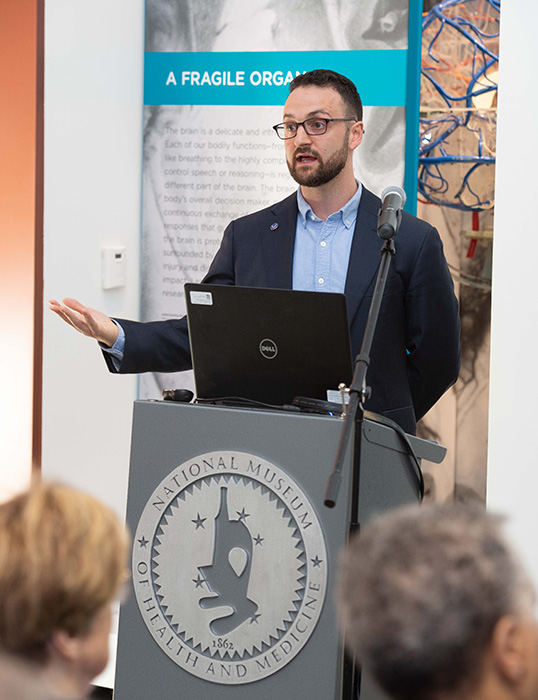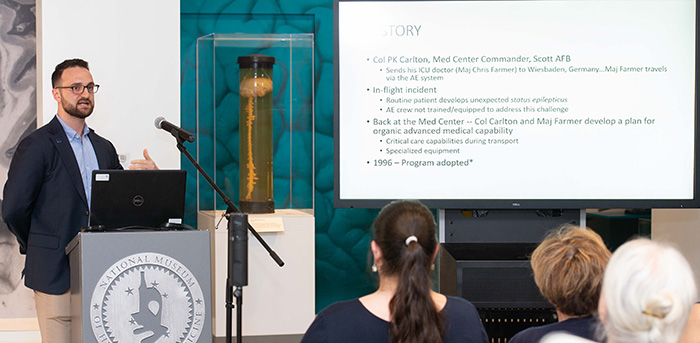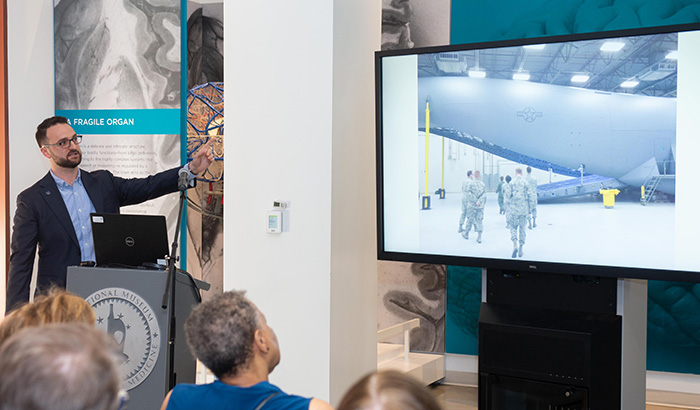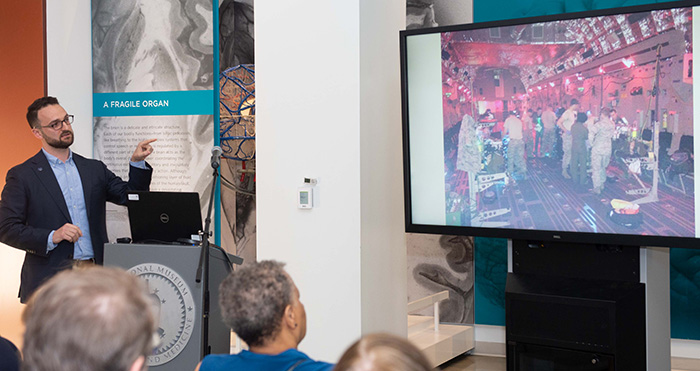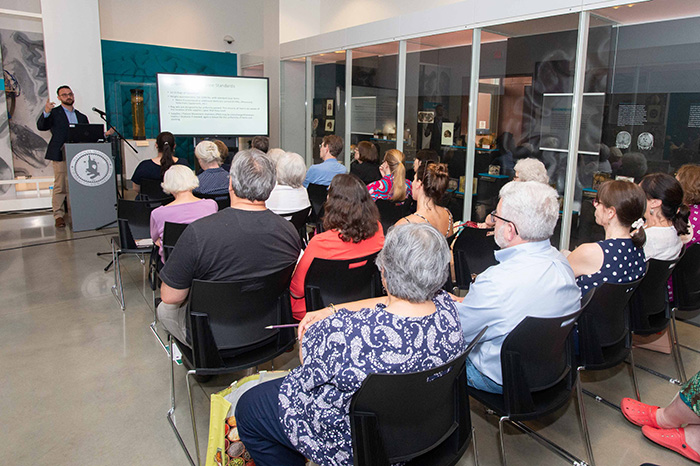Preparation and Specialized Equipment Boost Capabilities for Critical Care Air Transport Teams
By Jacqueline Gase
NMHM Public Affairs Coordinator
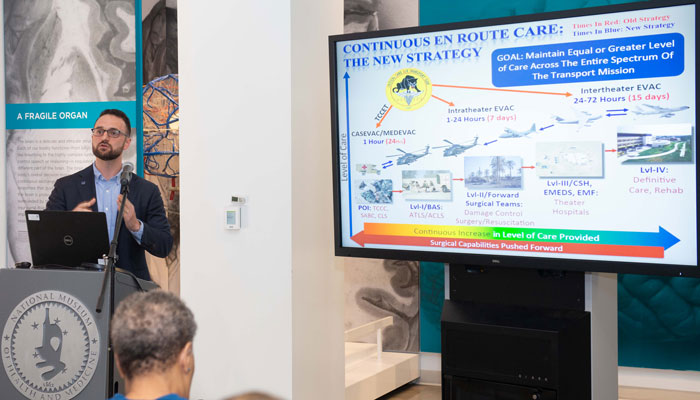
U.S. Air Force Maj. Alexander Kheradi speaks about the evolved capabilities of the Critical Care Air Transport Team at the May 28, 2019, Medical Museum Science Café titled "Critical Care in the Air" at the National Museum of Health and Medicine in Silver Spring, Maryland. (Department of Defense photo by Matthew Breitbart)
U.S. Air Force Maj. Alexander Kheradi, M.D., described the forward care of the Critical Care Air Transport Team, or CCATT, to National Museum of Health and Medicine visitors during the May 28, 2019, Medical Museum Science Café titled "Critical Care in the Air." Forethought and preparation combined with compact, modular equipment allow Kheradi and other CCATTs to provide quality care as they transport patients via aircraft to a more permanent treatment facility.
Detailing the process, Kheradi defined the capabilities of a CCATT as "an ICU in an airplane." Rather than bringing highly skilled medical providers and limited resources into a war zone, a CCATT transports patients to the medical providers and resources as quickly as possible. "One of the big things we need to consider when we develop these teams is that they need to be lightweight, modular, and able to deploy at any minute," said Kheradi. With current technology, Kheradi explained, a CCATT can move a patient out of a conflict zone and into a higher level of care stateside in 24-36 hours.
The response time is just one of the extraordinary qualities of a CCATT. Aircraft noise is deafening, causing difficulty in communication; it's hot, and sometimes it's dark, with only headlamps for lights. As a result, preparation and training is key. To become a CCATT member, trainees participate in intense simulations in a variety of scenarios. The training even goes beyond typical professional duties.
"Even though I'm a physician, I need to know how to draw up medication. I need to know how to administer medication, how to control the monitors, how to reset things. My nurse [or respiratory therapist] may be working with another patient so I need to fulfill all those roles.... It's one continuous unit, we all need to be on the same level of expertise," said Kheradi.
Each CCATT is equipped with three members: a doctor, a nurse, and a respiratory therapist. A team can provide care for up to six patients, three ventilated and three unventilated. Provided with 13-15 bags of specialized equipment that may weigh up to 1,000 pounds, Kheradi and other CCATT members work with equipment specifically designed for their needs.
Kheradi noted that one of the greatest innovations developed since the inception of the CCATT program is the Special Medical Emergency Evacuation Device, or SMEED. The black, raised tray can be affixed to a litter and contains all the equipment for the patient, such as a ventilator and vital signs monitor. The SMEED is compact and mobile with all the necessary technology in one place.
When Andrea Schierkolk, NMHM public programs manager, provided Maj. Kheradi with a tour of the museum prior to the presentation, Kheradi pointed out that many of the early 2000s CCATT tools on display, including a SMEED, peripheral nerve block device, and a patient-controlled analgesia pump certified for in-flight use, are still used today, as they are reliable and trusted tools of the trade. "NMHM is committed to collecting and exhibiting innovations in battlefield medicine, including artifacts related to evacuation and transport of the wounded," said Schierkolk.
CCATTs, though developed by the Air Force, use their capabilities to provide care and transportation for patients across the military community and beyond, even treating and transporting civilians from both within and outside the United States. With an estimated 50-60 CCATTs around the world, "We're responsible for the transport of everybody that's injured," said Kheradi.
NMHM's public programs provide forums for informal learning that connect the mission of the Department of Defense museum with the public.
For more information about upcoming events, call (301) 319-3303 or visit https://www.medicalmuseum.mil.
